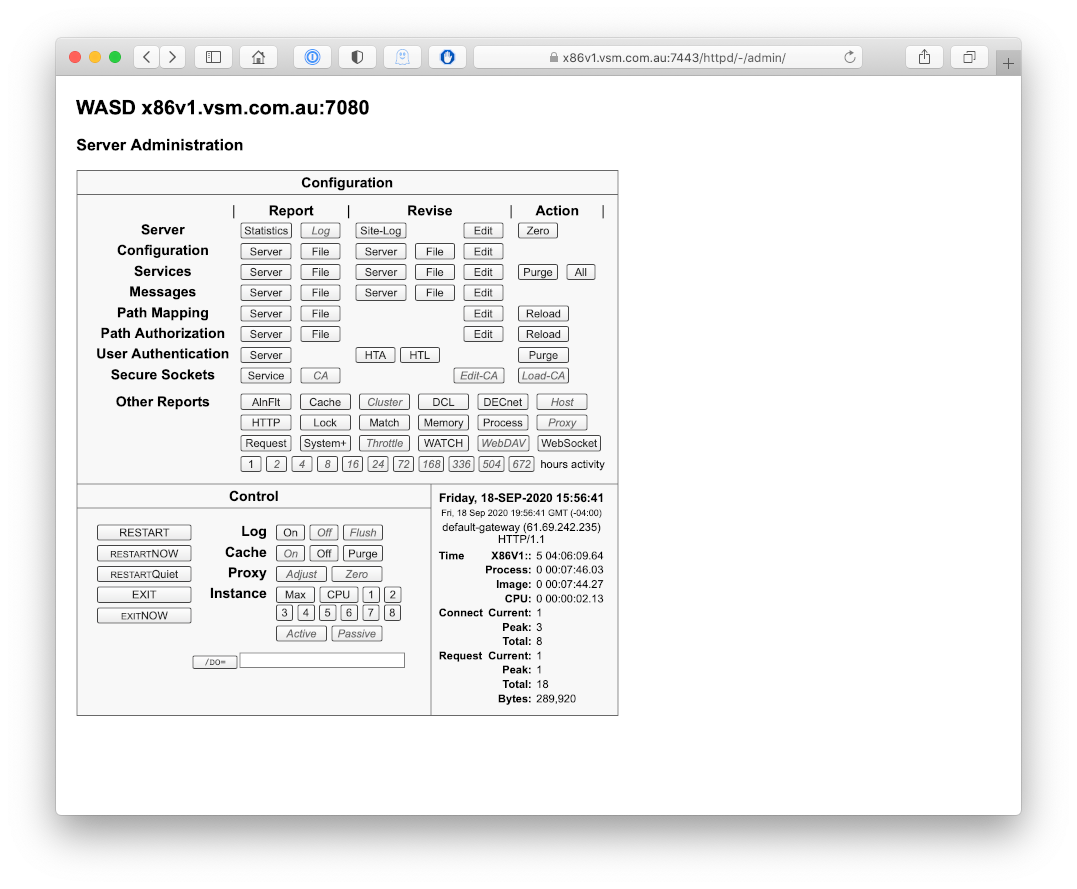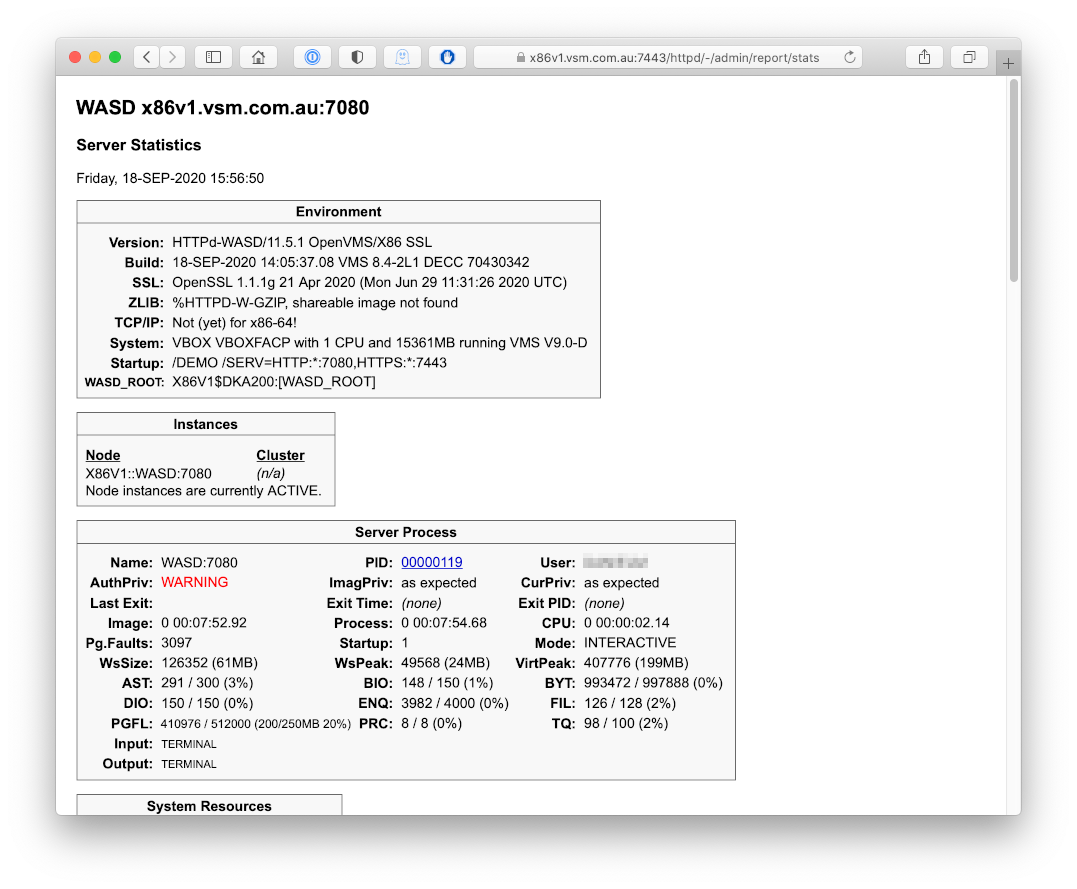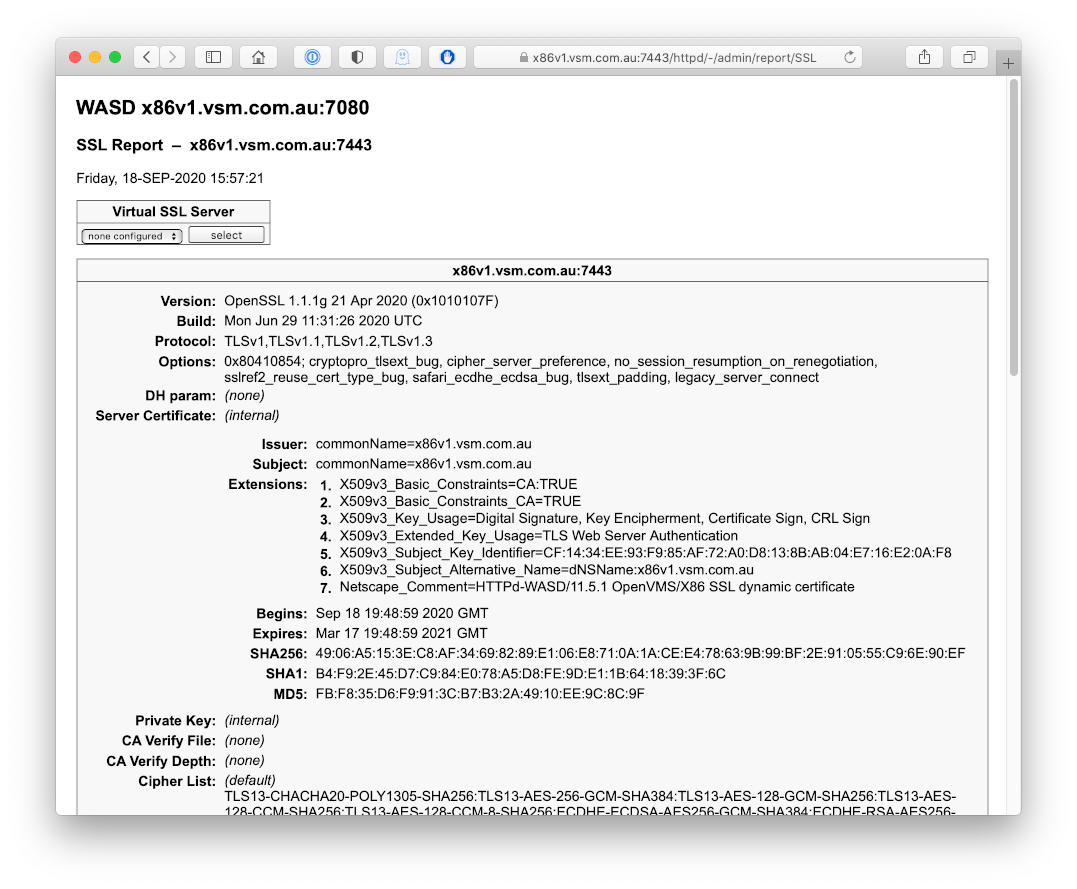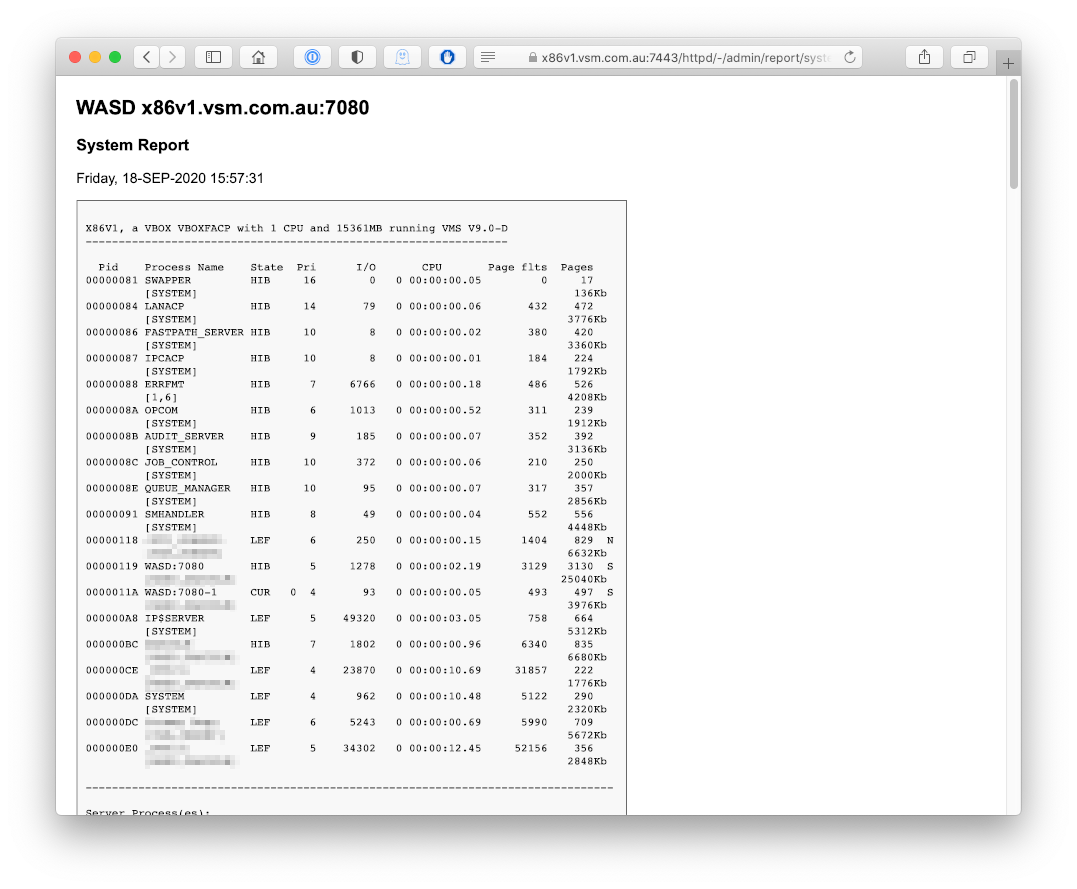



WASD x86-64 on OpenVMS V9.0-D EAK after less than 8 hours porting effort...




Text from original email...
When we left our intrepid adventures Thursday, the journey had progressed a mere few steps before grinding to a halt after initialisation. > %HTTPD-I-BEGIN, 17-SEP-2020 14:07:51, WASD:7080 accepting requests The issue was found with perhaps three hours further investment the following day. Early in the start-up a gethostname() (standard C library networking call) was returning with user-mode ASTs disabled. Now, you don't need to know too much about WASD to understand that disabled AST delivery is an absolute neurotoxin. An OS/network-stack/runtime bug. Reported to VSI (though likely not for the first time). Workaround; $SETAST(1) immediately following the call. Woosh! Responsiveness on port 80. That addressed, the next step for a modern Web, was to secure network communications. The OpenVMS V9.0-D VM came with VSI SSL111 installed. So far the executable image had been cross-compiled and cross-linked on the Itanium system. To build against the SSL111 shareable images the object code needed to be brought across to the x86 and linked there. It then reported... %HTTPD-I-SOFTWAREID, HTTPd-WASD/11.5.1 OpenVMS/X86 SSL WASD VMS Web Services, Copyright (C) 1996-2020 Mark G.Daniel. 8< snip 8< %HTTPD-I-SYSTEM, VBOX VBOXFACP VMS V9.0-D 8< snip 8< K:1 E:2 S:4 U:8 NET:322 !<- debug code before gethostname() user-mode ASTs active K:1 E:2 S:4 U:0 NET:325 !<- after; user mode ASTs no longer active 8< snip 8< %HTTPD-I-SSL, OpenSSL 1.1.1g 21 Apr 2020 (0x1010107F) -SSL-I-PROTOCOL, TLSv1,TLSv1.1,TLSv1.2,TLSv1.3 -SSL-I-OPTIONS, 0x80410854 -SSL-I-SNI, Server Name Indication enabled -SSL-W-DH, no ephemeral DH param %HTTPD-I-HTTP2, enabled 8< snip 8< %HTTPD-I-SERVICE, http://x86v1.vsm.com.au:7080 %HTTPD-I-SERVICE, https://x86v1.vsm.com.au:7443 %HTTPD-I-SSL, x86v1.vsm.com.au:7443 Generate x86v1.vsm.com.au 2048 bit private key: ................++++++++++++ .......++++++++++++++ %HTTPD-I-DEMO, demonstration mode 8< snip 8< %HTTPD-I-BEGIN, 18-SEP-2020 15:48:59, WASD:7080 accepting requests A page containing images of the running server is available at https://wasd.vsm.com.au/other/WASD%20x86-64%2019-SEP-2020.html Total time invested (excluding troubleshooting the gethostname() issue); something less than 8 hours. Total code changes; $ search *.c "#ifdef __x86 ****************************** WASD_ROOT:[src.HTTPDX]httpd.c;6 #ifdef __x86_64 #ifdef __x86_64 #ifdef __x86_64 ****************************** WASD_ROOT:[src.HTTPDX]net.c;17 #ifdef __x86_64 ****************************** WASD_ROOT:[src.HTTPDX]sysplus.c;3 #ifdef __x86_64 ****************************** WASD_ROOT:[src.HTTPDX]tcpip.c;7 #ifdef __x86_64 #ifdef __x86_64 ****************************** WASD_ROOT:[src.HTTPDX]version.c;3 #ifdef __x86_64 A couple of these disable image analysis for reporting purposes; it seems x86-64 ELF details are different to IA64. The SYSPLUS.C a similar disablement for a system call reason. A couple to report X86 instead of AXP, IA64 or VAX :-) Seems a bit too easy. Of course VMS is VMS is VMS and now VMS. Mostly. This is a real-life, almost real-time, porting report on a EAK. Most reassuring. Porting application code should be (relatively) straightforward. Though I'm pleased WASD doesn't do any kernel fiddles :-| Trust this is of some interest and use, Mark.